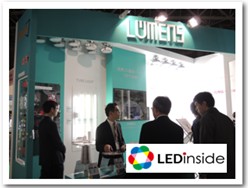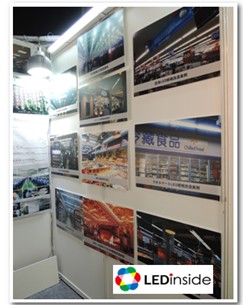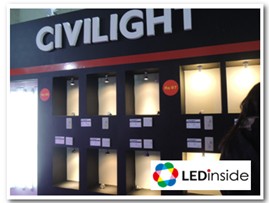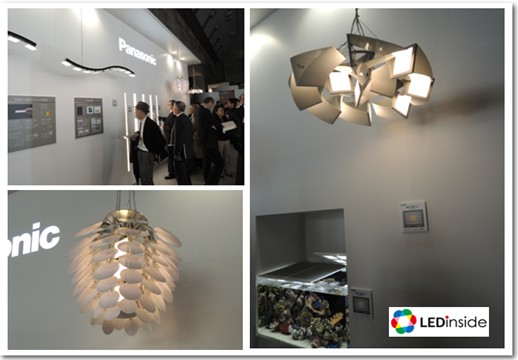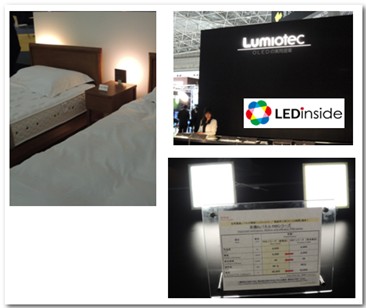The earthquake that shook Japan in 2011 drove up LED bulb market demand. Unlike other countries, Japan first developed LED lighting in the residential market which substantially increased market demand as a whole. The lighting market continued expanding LED products in 2013, targeting indoor lighting including residential and commercial lighting, and launching tube lighting, panel lighting and ceiling lamps. LEDinside continues to observe commercial lighting market developments in 2014. As commercial lighting continues to expand, tube, panel, and niche market candle lighting are gradually maturing.
Commercial Lighting
LED tubes and panels continue to develop. Toshiba improved the dimensions of their LED tube, launching 160mm tubes with 5200lm, emphasizing that they are smaller in size than traditional florescent fixtures, have an increased brightness, and reduced electricity consumption. Cost can be recovered in about 3.5 years. Ceiling lamps used in dining rooms or kitchens have higher color rendering demands. Toshiba products color rendering can currently reach Ra90. Optical design uses reflector plates to reach omni-directional lighting effect.
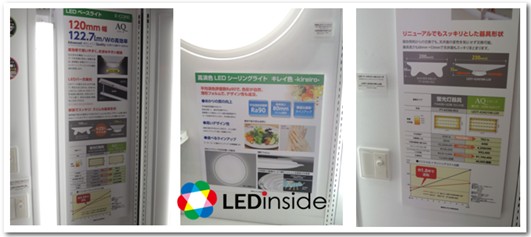 |
Originally a consumergrocery channel, Iris Ohyama is actively strategizing the lighting market to gain market share. Luminosity efficacy of their new shaped integrated style lamps can reach 160lm/W, an increase of 33 percent compared to older models. In order for the company’s LED tube to win the Good Design Award, it must follow these three steps: install a base, power circuit, and assemble lighting fixture, as well as for multiple sets of lamps to be able to use the same electrical source.
Overseas manufacturers also used Lighting Japan 2014 to display their new products, seizing Japanese lighting market shares. For example, Korean package, module, and lighting manufacturer Lumens plans to develop and target these three areas in 2014.
Shenzhen Collesun Lighting was established in August of 2003 and entered their LED products into the Japanese market the same year, introducing their in-house brand Collesun directly into retail channels. Collesun currently has over 700 supply chain retailers for their LED indoor lighting fixtures in Japan.
Civilight Shenzhen Semiconductor Lighting started selling their products in the European and U.S. markets in 2003, and established their two brands Civilight and V-light as well. Sunlight Shenzhen Opto-electronic Technology became the company’s packaging manufacturer. The company showcased its Ra95 LED tubes and Ra97 commercial lighting products.
Niche Commercial lighting market one: LED candle lights
After traditional incandescent candle lights were banned, LED manufacturers turned towards developing peripheral luminosity products in order to reach light efficiency to replace incandescent candle lights. DEC Light uses TE Opto (Epistar and Toyota joint venture) candle light filament to create incandescent lamps to reach a two sided light efficiency. The product was highly received during the exhibition due to its light shape and good luminosity.
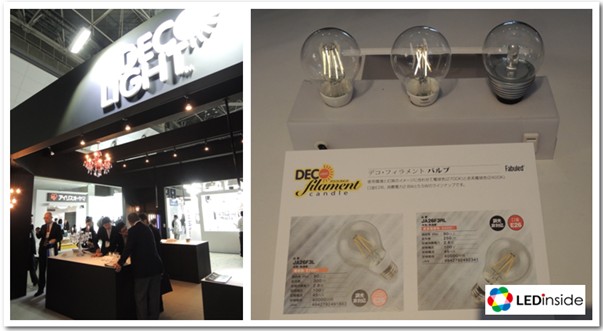 |
Commercial lighting niche market two: small pitch indoor display panels
Optotech showcased their small sized P3 (3mm) display panels, which are mainly for application in the indoor lighting market. Compared to products by competitors in the market, the P3 LED display has an unique design of modular structure minimizing the pitch between modules assembled. Labor hours and costs are reduced by speedy disassembly, high brightness designed for semi-outdoor usage. LED lifetime is also extended with high efficiency LED and IC applied that reduces, customized module fitting more effects. Although most are customized services, the display’s current shipment leadtime is only three months.
 |
Commercial lighting niche market 3: OLED lighting
Panasonic currently mass produces OLED lighting, with luminosity reaching 30lm/W, thickness of 2.22mm, and weighing only 38g. Additionally, advantages include heat emission at 30℃, mercury free, and using green lighting material. Panasonic is able to create fixtures in various shapes due to advantages of OLED panel lighting and thinness.
Since OLED luminosity is less efficient than LED, manufacturers mainly use OLED lighting in decorative lighting. Lumiotec integrates OLED lighting into hotel decorations to create comfortable and elegant spaces.








